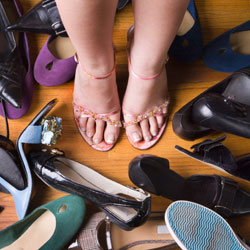Reading: A Home Run!
On August 6th, students of all ages will parade around Dozer Park with everyone’s favorite, fun-loving mascot, Homer, leading the line. The smiles on their faces might come from the excitement of attending a baseball game free of charge… or stem from the pride of achieving their goals in Homer’s Reading Program—which won them their free tickets.
From making donations to volunteering with kids’ clubs, the Peoria Chiefs take part in a range of projects to improve the local community. With its literacy program, the team hopes to have an impact on education and literacy. “We want to inspire kids to read,” says Lauren Kenney, program director. “We are trying to promote the importance of literacy in the Peoria area.”
During the 2013 season, Homer’s Reading Program partnered with PNC Bank to bring the program to more than 9,000 students in central Illinois. This summer, the Chiefs and PNC are back, teaming up with the Heart of Illinois United Way’s Success By 6 initiative to extend the program to reach pre-K students. And they hope to grow it even more.
Teachers who participate in the program set goals, such as number of books or pages read, for each of their students. As the students accomplish each goal, they “round the bases,” receiving a small prize at each base. Once they make a “home run,” they receive a free ticket to a Chiefs home game—complete with a hot dog and soda. Not only that: 45 minutes prior to game time, they get to parade around the field with Homer!
Each month, the program will provide 2,800 books to students at more than 50 area schools—enough to ensure a strong local impact. “It’s always been important to us to stay active,” says Kenney, “and try to make the biggest difference that we can.”
Organizational Jazz
In a recent study published by the Graziado Business Review, researchers David R. King and Samuel M. DeMarie compare organizational culture to music, saying the comparison can assist managers in influencing the culture of their own companies. In their analysis, King and DeMarie dissect several aspects of music and compare them to various characteristics of culture—the aspects that make or break a company.
They stress that managers can improve performance by more deliberately managing their organizational culture and “considering culture as setting the appropriate background music” for their company.
For instance, in music, form describes events’ relationships and order within a composition, often providing a structure like a repeating chorus or verse. Like form in music, form in business is organizational structure, enabling “internal coordination, alignment with a firm’s environment and a reduction in member uncertainty and stress.”
Meanwhile, genre describes “identity” in music and is a guiding principle for creating new compositions. Likewise, effective companies need a genre, or common identity, to distinguish themselves and provide a basis from which to coordinate organizational efforts. Just how much an organization’s members align with its genre can determine how well information is exchanged within it.
Harmony can balance tension in music, providing stability in composition. Similarly, harmony within an organization refers to the idea of isomorphism—where organizations in the same industry become more alike over time due to uncertainty and ambiguity. The researchers suggest that when balance enables effective transitions—when there’s effective harmony—organizations can enable greater progress.
Where rhythm in music refers to the pattern of sounds versus silence and tempo is the speed of the notes, rhythm within an organization can be thought of as the strategy or pattern of decisions, and tempo as the speed of strategic ideas turning into action. While speed of action is important, without the rhythm, tempo is lost. Thus, implementing a strategy too quickly—before an organization is prepared to support it—can be a devastating move. Managers need to understand their company’s capacity to implement new ideas without exceeding limits—achieving both rhythm and tempo.
For more musical business metaphors, read the whole report at gbr.pepperdine.edu/2014/04/organizational-jazz.
 Donate Shoes, Provide Water
Donate Shoes, Provide Water
More than 700 million people don’t have access to safe drinking water, according to a 2013 study released by the World Health Organization and UNICEF. That’s about one out of every 10 people who inhabit this earth.
What’s more, the study reveals that 36 percent of the world’s population—2.5 billion people—lacks facilities with the ability to hygienically sanitize water. That’s why, for the third consecutive year, The Iona Group and Float Mobile Learning, in partnership with St. Ann’s WATCH program, are co-sponsoring a shoe drive in August at locations throughout the Morton area.
All new and used shoes collected—flip-flops, sandals, tennis shoes, clogs, dress shoes, garden shoes, etc.—will be donated to WaterStep with several purposes in mind. First, usable shoes can be sold by local merchants in poorer regions of the world to help them provide a sustainable living for their families. In addition, shoes improve residents’ overall health by protecting them from abrasions, parasites and mites, and finally, portions of unusable shoes will be recycled, eliminating hundreds of tons of landfill waste as a result.
WaterStep is a nonprofit organization focused on providing safe and reliable drinking water all over the world. It knows that many of the world’s problems could be cured with access to clean water. By providing water treatment systems, offering health and hygiene education, and training people who are going into areas with unclean water, WaterStep provides more people with access to clean water and sanitation.
Over the last two years, with the support of the local community, more than 20,000 pairs of shoes have been donated to this worthy endeavor, resulting in safe drinking water for thousands of people worldwide.
For a complete list of drop-off locations, visit ionagroup.com/shoes. If you would like to host a drop-off location, call (309) 263-4662. For more information on WaterStep, visit waterstep.org.
Refrigeration 101
Refrigeration forever altered the face of food longevity, making us less dependent on daily hunting, gathering or grocery shopping—and freeing us for other pursuits. But in some regards, reliance on the fridge has become overdependence. As we’ve strayed farther from the origins of our food, we’ve forgotten that some of it doesn’t even need to stay cold.
The following are foods actually made worse by refrigeration, as advised by Christopher Snow at reviewed.com. Guidelines for produce refer to uncut, unprocessed fruits and veggies; once cut, all perishable produce should be refrigerated. You should never refrigerate…
- Tomatoes. Cold temperatures break down their flesh and make them mushy. Direct sunlight is also a no-no; for even ripening, store them at room temperature in a cool, dry place.
- Potatoes and onions. Refrigeration turns potato starch into sugar, changing the flavor. Store potatoes and onions in a cool, dry place… and away from each other! Potatoes emit a gas that can cause onions to rot prematurely.
- Garlic. Garlic bulbs can last a long time if they receive enough air circulation—outside the fridge. This also prevents other items from picking up that garlicky smell.
- Melons. Melons should not be refrigerated until cut. Room temps are perfect for even ripening and optimal sweetness.
- Peaches, apricots, nectarines, plums and cherries. These fruits should be ripened at room temperature, ideally with the stem sides down. Once they soften slightly and begin to smell sweet, they can be moved to the fridge where they’ll last another three to five days.
- Hot sauce. With some exceptions based on ingredients, most vinegar-based hot sauces need not be refrigerated. The cold weakens the flavor and changes the sauce’s thickness.
- Honey. Honey crystalizes in the cold, making it difficult to pour or spread. Honey is one of the world’s best natural preservatives, with a very long shelf life—out of the fridge. Oils. While some fancier oils (like hazelnut oil) should be refrigerated, your everyday olive, canola and sesame oils will become cloudy and harden in the fridge.
- Bread. Though refrigeration staves off mold, it’ll make bread hard and less flavorful. Freezing can maintain texture—if you have time to defrost it—but your best bet is to eat it at room temp before it goes stale.
- Avocadoes. Avocadoes won’t ripen when they’re cold. Use the fridge to halt ripening; otherwise, avocadoes are best stored at room temp. If you use half an avocado, store it in the fridge—inside the skin and with the pit—to prevent browning.
- Bananas. Bananas also won’t ripen when they’re cold, so only use the fridge when you want to slow down ripening. Beware: cold temps will turn the peel black, but the flesh will remain unspoiled.
Emotional Connection
A new Twitter tool is mapping the real-time moods of people around the world. Developed by computer scientists at Australia’s Commonwealth Scientific and Industrial Research Organisation and released by mental health researchers at Australia’s Black Dog Institute, “We Feel” analyzes English-language tweets linked to emotions such as love, joy surprise, anger, sadness and fear. It examines up to 32,000 tweets per minute, identifying trends that can be used to monitor the emotions of individuals and communities across varying locations to improve the allocation of mental health services. Access the “We Feel” tool at wefeel.csiro.au.
Vein Payments
A Swedish startup company has launched the world’s first vein-scanning payment system. Developed by Quixter, the biometric technology can quickly scan the hands of over 1,600 active users, and through vein identification, access registered account information to pay for items at store registers. The company’s owner touts the system’s security as fraud-free and fast—under five seconds per transaction. Several other companies, such as PulseWallet in New Jersey, are moving to implement similar technologies in the U.S.
Walkable City Perks
A pair of recent studies found that adults living in urban neighborhoods more conducive to walking experience lower rates of obesity and diabetes than those in more auto-dependent neighborhoods. According to researchers at St. Michael’s Hospital in Toronto, people who live in walkable neighborhoods are three times more likely to walk or bike to their destination, and half as likely to drive. While the City of Peoria continues to make strides towards enhancing its pedestrian environment, the city’s average walk score, according to walkscore.com, remains “car-dependent” at 37/100. The most walkable Peoria ZIP codes are 61606, 61603 and 61614. iBi


